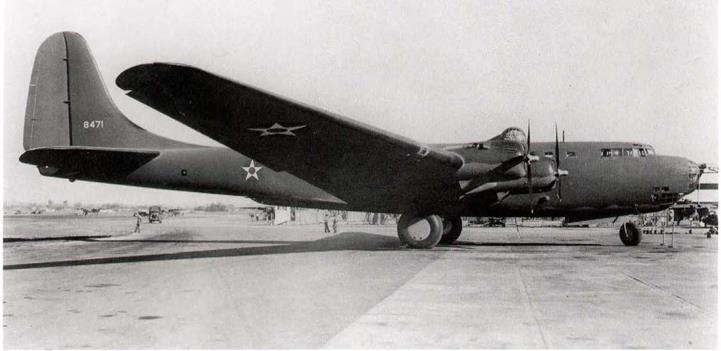Markings for Airplanes and Airplane Parts (Specification 98-24105)
Under para. 5., T. O. 07-1-1 called out Spec. Nos. 98-24105 and 99-2050 for airplanes and lighter-than aircraft, respectively. Spec. 992050 will not be covered here as the AAF had no airships and very few balloons of any kind at this time. Interested readers will find full details of this spec, in the author’s work on the Air Service and Air Corps.
Spec. 98-24105-P was the current version of the spec., entitled “Marking for Airplanes and Airplane Parts”, issued on August 11,
1936. It covered very extensive requirements for markings on external and internal surfaces and parts of all airplanes. These included:
(1) Name plate to be placed in each airplane
(2) Serial number of the airplane
(3) Letters and numbers designating the manufacturer of the airplane
(4) Code markings giving a record of the materials used in the finish
(5) Date of manufacture of covered airfoils (fabric covered – author)
(6) Strut numbers
(7) Data card
|
|
The Douglas XB-19 was quickly camouflaged al the end of 1941, prior to flying to Wright Field on January 23, 1942. It was to be the largest aircraft ever to be Finished in dark olive drab and neutral gray. (Harry Gann)
|
|
Bell Airacobra Mk 1, AH621, in flight, shows how the Sky underneath has been brought too far up on the fuselage sides. (USAF via Gerry R. Markgraf)
|
|
Consolidated Model 32 Liberator II was one of 165 to be ordered by the RAF, with RAF serial numbers AL503/667. Ninety two of them were transferred to the Air Corps and used on the first trans-Atlantic transport service. Finished in the standard RAF night bomber scheme of dark green and dark earth on upper surfaces and night (black) on lower surfaces. It carries the Air Corps Ferry Command insignia on the rear fuselage. The USA flags denoted its neutral status. The number “76” on the fin is a shortened form of the RAF serial number, AL576. (USAF)
The following paragraphs cover the main external markings required on all AAF aircraft:
A. Color and style of markings. – Arabic numerals and letters made with black dope or black color-in-oil were to be used. Where black would not provide sufficient contrast, white was to be used.
B. Fuselage Markings – The following technical legend was to be stenciled on the left side of the fuselage, forward of the front cockpit. If the cockpit was in the nose of the fuselage, the markings were to be placed to the rear of the cockpit.
U. S. ARMY – {model designation)
AIR CORPS SERIAL No…………….
Crew Weight….. …..lbs.
The letters and numbers for the first two lines were to be not less than 3/4 inch, nor more than 1 inch high. All other lettering was not to be less than 7/16 inch high, nor more than 1/2 high.
C. Lower Wing Markings – the marking “U. S.ARMY" was to be painted on the lower surface of the lower wing or on the lower surface of the wings of monoplanes. The letters “U. S.” were to be painted on the right wing, and the word “ARMY" was to be painted on the left wing, with the top of the letters toward the leading edge of the wing. These markings were to be centrally located with respect to the wing outline. The letters were to be of the vertical type, 24 inches high and with strokes four inches wide.
No substantial changes in these marking requirements occurred until camouflage was called out for all combat aircraft in Spec. 24114, “Camouflage Finishes for Aircraft”, dated October 22, 1940. Their markings were to conform to Spec. 98-24105-P and amendments, except that the marking “U. S. ARMY” on the under surface of the wing was to be applied with blue, Shade 47 of Bulletin No. 41. All other exterior markings were to be applied with either red, black or blue, Shades 45, 44 and 47 of Bulletin No. 41.













